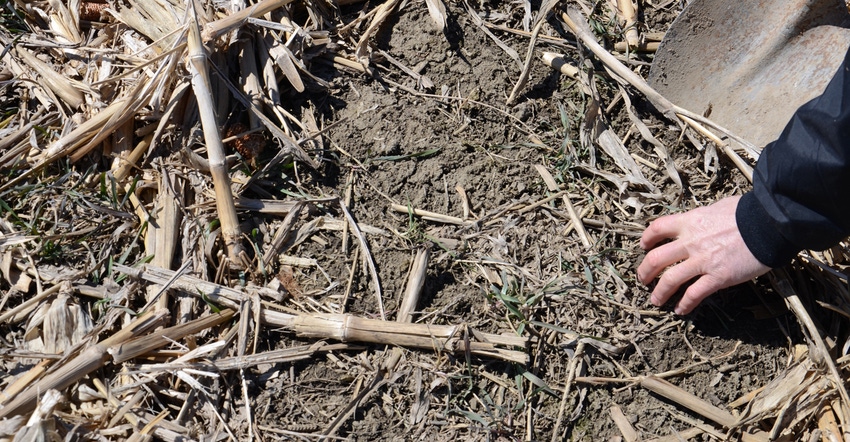January 9, 2018

By Don Donovan
Spring is coming, and planting season will be here soon. As you plan your 2018 planting season, does it include spring tillage? Is your spring tillage plan set in stone, or is it subject to change depending on weather conditions? Do you plan to no-till, but maybe run over it with a vertical-tillage tool to dry it out before you plant if we have a wet spring?
However innocent a light tillage pass may seem, you have to live with the long-term consequences it may cause to your soil health. In many Indiana soils, the greatest likelihood for causing soil compaction occurs a couple of days before the soil is truly dry enough to plant. If you run a tillage tool over the soil to dry it out, you may be doing so at a time when you risk causing a layer of compaction that you will have to live with the rest of the growing season.
Depending on the tool, and the speed and depth at which it runs, you risk causing as much compaction as a disk would cause. If you have ever watched a new road being built, you know they use a disk to prepare and compact the soil. This compaction layer could be enough to prevent proper rooting of your corn or soybeans, thereby reducing potential yields in a dry summer.
Soil crusting
How do you view soil crusting? Is it one of your concerns after a spring rain, especially if you just planted and you got a heavy rain before your crop emerges? Crusting is directly related to tillage, and generally doesn’t occur in untilled soils that have developed good soil aggregation.
When a rain event occurs, soil particles are dislodged from the surface, and they fill pore spaces on the soil surface. Soil health experts call this “the first stage of erosion.” If the weather turns hot and dry, crusting will occur due to the breakdown of soil structure on the surface.
Research has shown that in long-term never-tillage soil health systems, one tillage pass can destroy what it took 10 years to build. Yes, that can even include a light tillage pass with a vertical-tillage implement.
Farmers using soil health management systems that include no-till and cover crops are finding they can reduce compaction and crusting. Since the soil is not tilled, the soil structure and aggregation remain intact, and crusting doesn’t occur after large rain events. That same structure and aggregation provides better infiltration, and if the system is mature, you’ll find your soil is more resilient and less likely to compact.
Remember, successful no-till and cover crop systems require a heavy dose of patience. Do your research, talk to successful no-till and cover crop farmers, and resist the temptation to use unnecessary spring tillage.
Donovan is a district conservationist with the Natural Resources Conservation Service based in Parke County, Ind. He is a contributor to the Salute Soil Health column that appears regularly in Indiana Prairie Farmer on behalf of the Indiana Conservation Partnership.
You May Also Like




